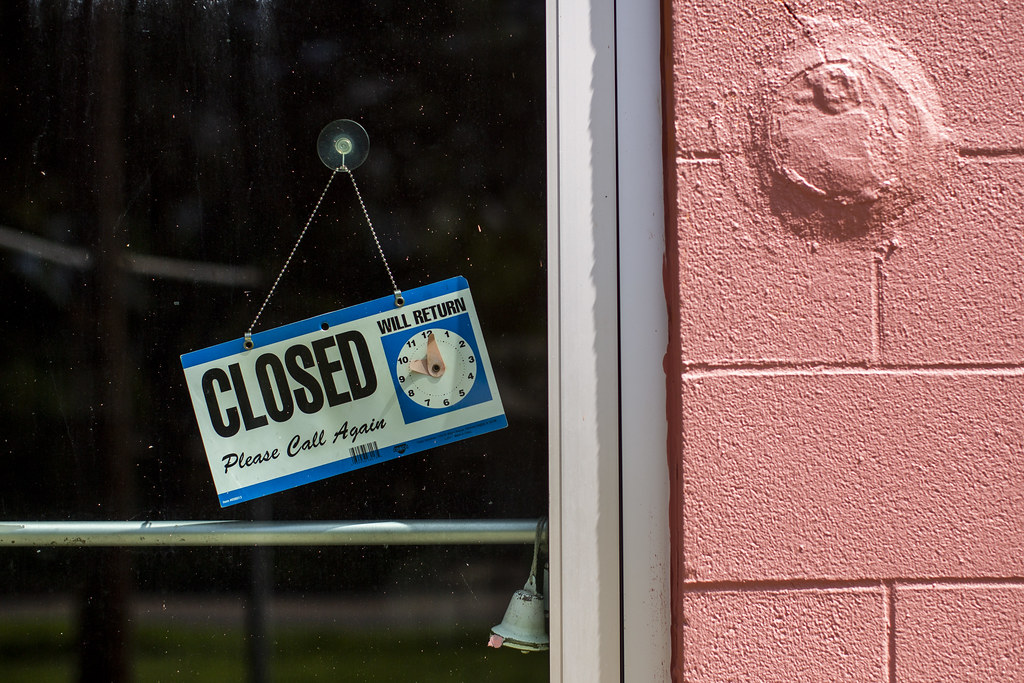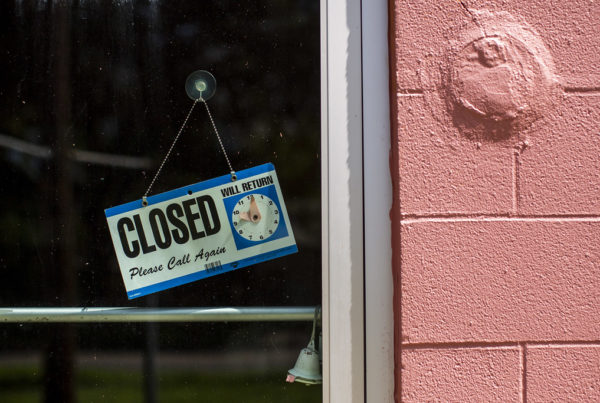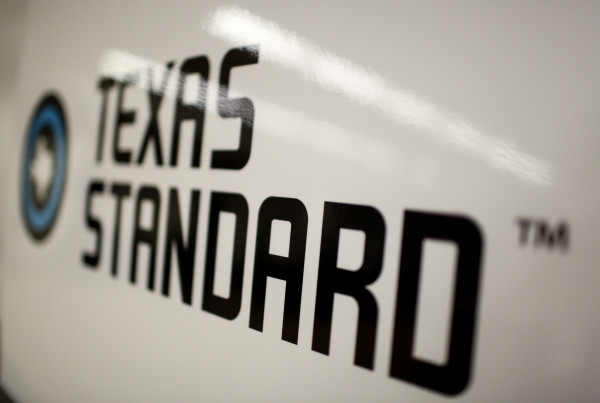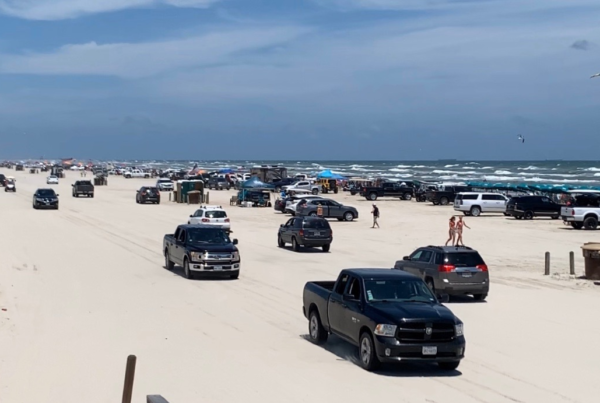Note: This story has been updated throughout to include information from two interviews with Texas Workforce Commission executive director Ed Serna. The original interview aired May 4, 2020. A second interview was recorded on June 17, 2020.
Texans who receive unemployment payments will have to prove they tried to get a job if they want to continue receiving the payments beginning July 6. Texas Workforce Commission executive director Ed Serna talked with Texas Standard about that decision and answered other frequently-asked questions about benefits and the Texas unemployment system.
Have unemployment claims remained on the rise or what have you been seeing?
We are seeing them decline. There are still individuals that are reaching out to us for first time benefits or initial claims, as we call them, but none of them dating back all the way to March and April and May. These are individuals whose businesses, or who were working for businesses, that hung on as long as they could and they’ve now recently been furloughed or had their hours reduced. So we are seeing downward trends, but there are still individuals that need help from us.
Compared to last year, what does the increase in claims look like at this point in mid-June?
Last year, we probably didn’t break half a million [in number of claims], and we did all of last year, sometime in the month of March, the equivalent of last year. As of yesterday [June 16, 2020], we had 3.2 million claims filed and we had paid out in excess of $12 billion.
Where is this money coming from?
The majority of the money that we’re using, that $12.9 billion, is coming from the federal government as a result of the CARES Act. Of course, we expended everything in our trust fund. We went longer than we had originally anticipated. We thought we were going to run out of funds in May and actually went all the way into early June. Now, that doesn’t affect any of the claims at all because we had already made arrangements to secure what are called Title XII loans. And these are interest-free to the end of the year, where we’re hoping that the government goes interest-free for a longer period of time.
How much of the Title XII line of credit has been used at this point?
So far, we’ve taken in about $240-plus million in the past, about five days in Title XII funds.
Are you concerned about what this means long-term for the TWC trust fund?
We are concerned about it and we’ve already started looking into the alternatives that we have to restore the trust fund. But we like to be tax averse. And we have, in the past, we went through the Great Recession and we avoided having to increase taxes to replenish the fund back then. But we’re looking at all those options, including issuing bonds and then the repayment of those bonds. We’ve done that in the past also and paid them off without having to adversely affect our employers and the taxes that they have to pay. But we’ve already started that exercise in earnest. We know that the number is going to be much larger, just because there are more individuals that are still drawing funds.
What was behind the decision to bring back the work-search requirement for those filing for unemployment?
It was a challenging decision for us to try to reinstate that. We encourage individuals that can return to work safely, return to work so that we can get the economy started again. We have also included instructions to our staff that basically said, ‘look, there are particular conditions where it’s acceptable not to accept suitable employment.’ So, for example, if you’re over the age of 65 or at high risk from a health perspective, as described by the Department of State Health Services, or you have someone in a household like that, of course, if you’ve been diagnosed with COVID-19 or someone in your household, if you’re quarantined or if you’re having child care issues, then those are valid reasons for turning down a suitable offer for employment without having your benefits, your unemployment insurance benefits or pandemic unemployment assistance jeopardized.
How do you show that you’ve been seeking employment during the pandemic?
That should be a relatively simple task. We’ve reduced the number of job searches to three statewide. So it’s not requiring people to go out in public and go knock on doors and drop off resumes or have interviews or even, quite frankly, make phone calls. It’s simply a matter of, did you log in to Work in Texas and look at the jobs that were out there? Were you searching for work?
How do you comply with a work search requirement if you own your own business?
Then the question is, have you been trying to start your business again? And the simple answer that you have to provide us is, ‘yes, I’ve been trying to start my business, but have been unsuccessful because of COVID-19 or because the market hasn’t allowed me to restart my business.’ We know that a lot of people, especially the smaller sole proprietors, may have trouble doing that and they don’t have to go look for work. That’s why they’re self-employed. They didn’t want to work for somebody else. They wanted to work for themselves. And we’re not going to make them. We’re not gonna make them look for work or do work search. We’re going to ask them to tell us that they have been trying to start their business again. And if they’re successful, that’s great. And we wish them well. If they’re not. We’ll continue to support them.
Guidance from the governor directs the TWC to keep paying for some who have the opportunity to work again, but can’t or they don’t want to for some specific reasons, like being over 65 or recovering from the virus or living with someone in either of those categories. Another acceptable reason is no child care options. Any idea how long these exceptions for continuing to receive unemployment will be extended?
I’m not sure when health officials will say, ‘look, you know, this thing is at such a point that there is that these risks don’t exist anymore.’ So, we’ll continue to monitor that.
What about workers with an underlying health condition? There’s room in this guidance for other exceptions. What sort of things are you being asked or anticipating being asked to make an exception for at this juncture?
Well, of course, you know, when we point to – and I’m not trying to sound like a broken record – but when we point to State Health Services, they have a whole list of potential medical issues that could put you in that high-risk category. And we’re going to use those issues. And the reason I’m not being specific and we point back to that list is that list could change. You know, we’ve all seen in the paper that some of the symptoms have changed. And there are other things that change with regard to this particular virus. So, we continue to point that way and would encourage individuals who are ready to go back to work and have been offered a suitable employment to look at that, because that list changes – and it doesn’t change daily, by the way – but it does change.
How difficult is it going to be for your team to review situations where someone wants to continue to claim benefits even though they have a chance to go back to work?
We don’t believe it’ll be that difficult for several reasons. First of all, people call in to renew their payments – it’s called a continuing claim – to request the next two weeks of their benefit payments. And at that point, they tell us that they are able but are not available to take employment and they maybe have turned down employment. We’ll look at their reasons. And if it’s clear cut and it matches what we’re looking at, it’s going to be a pretty black-and-white decision. Some will take advantage of the situation. We recognize that there are always people like that, but we believe that to be in the very small minority of situations. The only cases that are going to take some investigation are a situation where someone says, ‘I can’t do this because of some other situation that’s not listed there.’ You know, ‘I don’t feel safe’ or ‘the environment that I’m going into, I don’t believe it’s safe.’ That’s going to take a little bit more investigation at that point.
What’s the best way to file for unemployment right now?
There are only two ways to file for unemployment in the state of Texas: calling our 800 number or through our web site. And the reason I emphasize that is there are fraudulent sites that are on social media or other that claim they will help you get your claim filed. I can’t emphasize enough. Please don’t do that. You’re giving your critical information to people who are not working with us. And now you handed off your identity to somebody who is going to do who knows what with it and really not really help you.
Texas has had to enhance unemployment funding because of some federal guidance. Is filing those claims a different process?
It’s not a different process. It’s the same process for both the new group of individuals who have come on board because of the CARES Act, as well as individuals who are normally under the unemployment insurance system. Same process. Same application. We ask for different information for the self-employed or the contract employees, 10-99 employees. We’re looking for your 2019 tax return with schedules. If you don’t have that, don’t worry. We’re going to authorize the minimum, which is $207 plus the $600 [from the CARES Act]. And then when you get your tax return, send it to us and we will adjust it.
Does that additional $600 per week from the CARES Act count against the previously designated maximum possible?
It does not. It is on top of your unemployment benefits or your pandemic unemployment assistance. And that pandemic unemployment assistance is a new term for us, for everybody in the country, and that’s the assistance to the self-employed and the contract employees that comes under the CARES Act. That additional compensation, that $600, is a fixed number. So, let’s say that you qualify for $300 of unemployment insurance a week. On top of that, you get the $600.
What happens if you go back to work part time or start earning some income again?
Please report that income to us. We will adjust your unemployment insurance benefit accordingly. So, let’s say the unemployment insurance benefit gets reduced down to $100. Well, then you get the $100 still with the full $600.
People continue to have problems making it into the TWC system to file a claim or get questions answered. What are you doing to try to fix that?
We have a new practice of calling outbound. You can still try to contact us. That’s OK. But we’re going to be outbound calling and contacting people to get these issues resolved.
What if you can’t remember your old login or PIN from the last time you filed for unemployment??
That’s another group of people that we’ve started outbound calling. The other things that we’ve done is, we’ve gone in and basically reset anything that’s older than four years old. And you didn’t have a recent claim. We just automatically reset it. So you’re starting fresh. We’ve had some other scenarios where people were having problems. They’ve locked themselves out. We know that they’re locked out. We understand who those individuals are. And we’ve been calling them helping them reset claims. We have a lot of volunteers that are helping us from other state agencies, in particular the Texas Legislature, the House and Senate. And they’ve been calling people. And internally, we reassigned a lot of staff not to work on the phone centers, but to help in other areas, do some research on open issues or the case we just were talking about or are talking about calling people to say, let me help you reset your PIN and password and they reset it and then they kind of get off the phone so that those individuals can privately answer their security questions and get a new PIN or a new password.
How old is the TWC claims computer system?
This [is] a mainframe based system. It was probably developed in the early 1990s. Now we have made improvements and we have enhanced it over the years. We haven’t just let it sit with its old configuration. But it’s still a mainframe system. Now, when you log on to our website and you access the unemployment benefits system, or UBS, that’s web-based, and that web base is sitting as a front-end. But, ultimately, it gets to this mainframe system. We were, in fact, in negotiations to replace that system, to begin the process, to replace it. Now, granted, that’s a two to three-year project and this is a massive system. But all that got put on hold so we could focus on the big fire, which was this COVID emergency. But, yes sir, it’s an old system. We appreciate the frustration that individuals have, but we also appreciate their patience and understanding. A lot of times when we talk to individuals, they, of course, express their frustration to us. But then they’re very grateful and express that gratitude that they got the help that they needed. And they’re kind of moving on.
Is the TWC system based on COBOL (a programming language from the 1950s)? And is that part of the problem? Why is TWC hiring COBOL programmers?
It is an old system based on COBOL and some other old languages. We have a lot of qualified people, but at the same time, during an emergency you need sort of all hands-on deck [with as] many hands as you can get. We’ve had a lot of good help from people that we’ve hired and from vendors who are helping us work on that system. Now I have to admit the system itself is not collapsing or falling apart. What we need those people to do is to help us make changes to that system to accommodate the requirements of the CARES Act.
What will you be asking from lawmakers for the next legislative session?
The Legislature was very supportive this past session and they gave us authorization for funding to replace this system. So, we have that in place already. And we were literally in the middle of negotiations with vendors. We had put a request for offer out – a bid document out. We had evaluated it and we were narrowing it down. So, the Legislature was very supportive last session. We’ll have to see what comes out of this if there’s anything else that we need. But we think that with what we got last session and where we were at. We’re going to continue to move forward to get that done.
Are you seeing any patterns in unemployment claims that maybe seem unexpected or surprising?
Not unexpected. You know, the top five – and they kind of change places – and it’s going to start changing again because of the reopening of the economy. We hope. But were food services, retail. Actually, health care assistance. And transportation, you think about airlines, public transportation, buses, et cetera, et cetera. So, you know, we saw those as some of the top ones that we’re always seeing at the top of the list. They shift places every now and then where one week maybe it’s food services and the next week, maybe it’s retail. What we see kind of working its way up the chart pretty quick, so to speak, are what we describe as ‘construction and extraction’ – which would be oilfield and those related kind of kind of fields. So those are the patterns. We look at it in very broad categories, generally speaking, but those are kind of the ones that stand out significantly. We are also seeing more high-tech that are getting affected or office workers that are affected. They’re in the top 10 as well.
If you found the reporting above valuable, please consider making a donation to support it here. Your gift helps pay for everything you find on texasstandard.org and KUT.org. Thanks for donating today.















